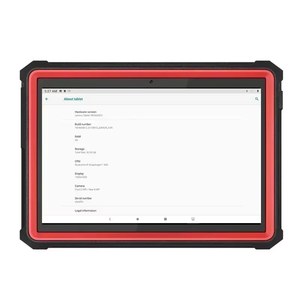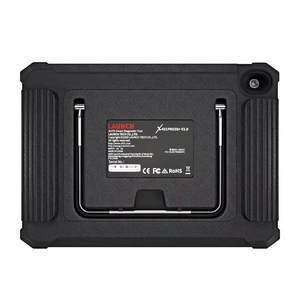
All categories
Featured selections
Trade Assurance
Buyer Central
Help Center
Get the app
Become a supplier

(1418 products available)













































There are several kinds of OBD2 scanners for Nissan that buyers can choose from, and they include the following:
Handheld OBD2 Scanners
These are the most commonly used OBD2 scanners for Nissan. They are very portable and easy to carry around. They come with a display screen that shows diagnostic information. Handheld OBD2 scanners for Nissan plugs into the vehicle's OBD2 port. They are very easy to use and are often used for basic functions like reading and clearing DTCs.
OBD2 Bluetooth Adapters
These are small devices that connect to the vehicle's OBD2 port. They enable wireless communication between the vehicle and a smartphone or tablet. OBD2 Bluetooth adapters allow users to access diagnostic data through dedicated applications installed on their mobile devices. They are used for real-time data monitoring, reading DTCs, and performing some basic diagnostic functions.
Professional-grade OBD2 Scanners
These are advanced diagnostic tools that are used by professional mechanics and automotive technicians. They offer comprehensive diagnostic capabilities. Some of them include reading and clearing DTCs, accessing live data, performing advanced functions like coding and programming, and running active tests. Professional-grade OBD2 scanners usually have larger displays. They are designed for in-depth diagnostics and troubleshooting.
Key Programming Tools
These are specialized tools that are designed to program keys and key fobs for vehicles. They are used for key duplication, key reprogramming, and key integration in case of lost or replacement keys. Key programming tools often have diagnostic functions. However, their primary focus is on key-related functions and security system programming.
Scan Tool with Bi-Directional Control
These are diagnostic tools that allow communication between the scan tool and the vehicle's control modules. This enables users to send commands to perform specific actions. For instance, activating components, running tests, and performing calibration. Scan tools with bi-directional control are useful for diagnostic procedures requiring interaction with the vehicle's systems.
Different OBD2 scanners have various specifications that make them perfect for performing a specific task. Here are some general specifications to expect:
Like any other electronic device, it is vital to maintain the OBD2 scanner so that it can continue to function well and perform tasks accurately. Here are some recommended maintenance practices:
When choosing an OBD2 scanner for Nissan vehicles, consider the following:
Most handheld OBD2 scanners are easy to use and require no installation. To use the scanner, plug it into the vehicle's OBD2 port. This port is located under the dashboard, near the steering column. Then, turn on the Nissan's ignition, and the scanner will power up.
Next, users should select the appropriate scan option. Scanners have several options, including reading codes, clearing codes, and live data. Select the option that suits the needs at the moment. After that, wait for the scanner to retrieve information. The scanner will communicate with the car's ECU and either pull up diagnostic trouble codes (DTCs) or start live data streaming.
Nissans don't require any special OBD2 scanners. Generic scanners should be able to access most control modules and read and clear codes. However, some features may only be accessible using a scanner with Nissan's Consult II protocol.
DIYers should follow the manufacturer's instructions for using specific OBD2 scanners. While the steps may vary slightly, many will be similar. First, plug the scanner into the OBD2 port and turn on the vehicle's ignition. Then, select the desired option to read or clear codes. Afterwards, consult the user manual to understand the retrieved codes and take appropriate action.
To ensure accurate code reading, DIYers should update their scanners. This process involves downloading the latest software to the scanner. It ensures the device has the most recent bug fixes and vehicle coverage.
With the right knowledge, tools, and OBD2 scanners, DIYers can tackle their Nissans' car issues. They can save time and money by identifying and troubleshooting many problems at home. However, some complex issues may require professional intervention.
Q1: Do I need the internet for an OBD2 scanner for Nissan?
A1: No, but it can be helpful. Scanners without the internet can read and clear codes. Those with the internet can access live data, updates, and more.
Q2: Can an OBD2 scanner damage a car?
A2: No, using an OBD2 scanner cannot damage a car. It is a safe tool that follows the standard protocols set up to ensure no harm is done to the vehicle's systems.
Q3: How long does it take to use an OBD2 scanner?
A3: Plugging in the scanner takes only a few seconds. Scanning usually takes 1-3 minutes, depending on the vehicle and the scanner's data. Overall, the process is quick and easy.
Q4: Can I use an OBD2 scanner on all cars?
A4: Most cars from 1996 onwards support the OBD2 standard. For older cars (pre-1996) or some models, compatibility with OBD2 is not guaranteed.